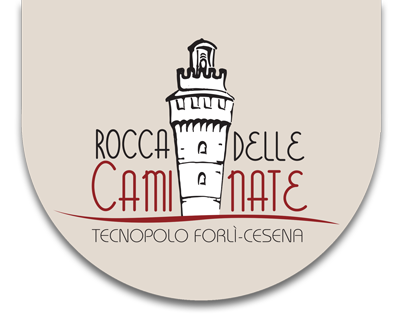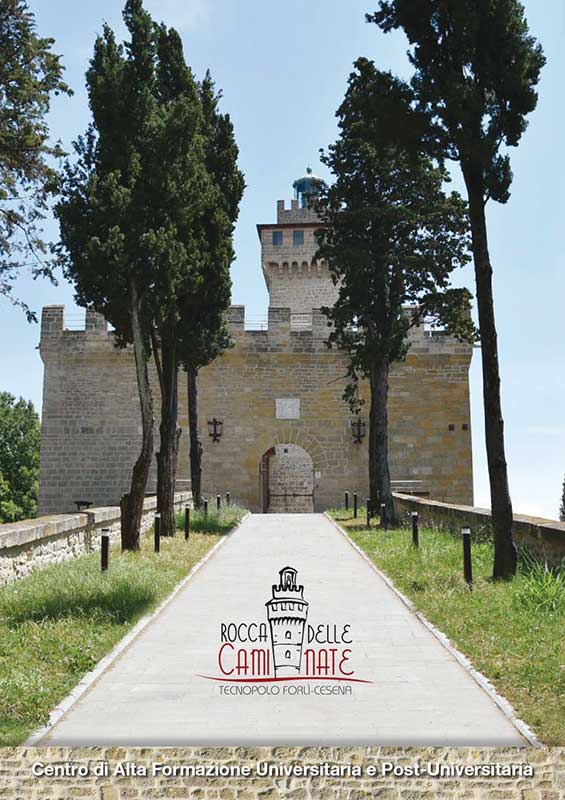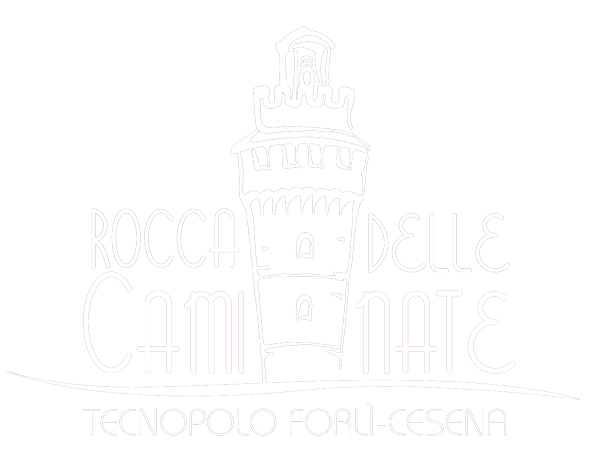After years of neglect, Rocca delle Caminate was finally the target of a major restoration project. This intervention benefited from € 3,300,000 from the Emilia-Romagna Region (through a EU funding scheme), and a further € 1,415,000 from the Province of Forlì-Cesena.
Restoration works were carried out by a number of companies temporarily grouped into a consortium, CONSORZIO FRA COOPERATIVE DI PRODUZIONE E LAVORO CONS.COOP. Soc. Coop (Consortium between producer and worker cooperatives). The Consortium named two companies to carry out the restoration works, namely LABORATORIO DEL RESTAURO Srl and ADRIATICA COSTRUZIONI CERVESE Soc. Coop. To give the castle a new function and future, the same consortium, in charge of the design and manufacturing process, appointed a team of designers coordinated by the Forlì architect Raoul Benghi.
A new functional design was necessary to redefine the castle’s rooms and to establish a new order of priorities for intended uses: conference hall, research rooms, offices for industrial promotion activities and spaces reserved for researchers. The new functional scheme envisages a body made of homogeneous blocks which guarantees connections, while also keeping the various activity spaces separate. At the same time, the new design ensures full respect of this cultural heritage site, through its conservation, protection and valorisation.
The castle’s functional restoration introduced a new architectural element connecting the three main areas (guesthouse, tower and “body of the great hall”) through a roofed connecting space: a safe, secure and comfortable courtyard. The distribution scheme designed as part of the castle restoration project is shaped around horizontal and vertical connections. Specifically, it aims at providing a vertical connection between the crenellated wall walk running along the castle’s perimeter and the roof terrace. On the other hand, the interstitial space between the three building blocks (a small courtyard) works as a transparent connection, a greenhouse or patio, securing horizontal connections through large double-volume balconies.
From the main courtyard you can access the guesthouse and the offices used for industrial promotion activities, through a large central opening. At the end, on the right, through a large entrance portal, you can enter the conference hall, walking through a filter space used for welcoming visitors. At the end, on the left, a door will lead you to the foyer (the castle well area).
Behind the tower all the interstitial spaces of the small courtyard were freed from existing volumes (canopies, balconies and verandas) and covered by a continuous, slightly sloping glass ceiling, placed at such a height that it is not visible from the outside and the courtyard. Inside, the ancient well is a point of special interest, a place of great scenic beauty that also serves as a timeless testimony to our historical heritage.
The transparency theme pervades the whole project and it is precisely the glass ceiling that connects and separates the three building blocks, creating a “winter garden”, a double volume for the open balconies of the first floor. From an architectural and distributional standpoint, this “transparent connection” is a major node. It is an articulated area, which wraps around the base of the tower and covers the entrance portal vertically. The latter consists of a blind round-headed arch, partly closed by glass and partly by its original restored wooden door dating back to the fascist era.
From the reception area you can get into the conference hall, finished in a clean and minimal syle, and to the upper floor and its three research rooms. The office block, located in the southern part of the guesthouse, has kept the shape and size of the existing historical lobbies to preserve their decorated wooden ceilings.



